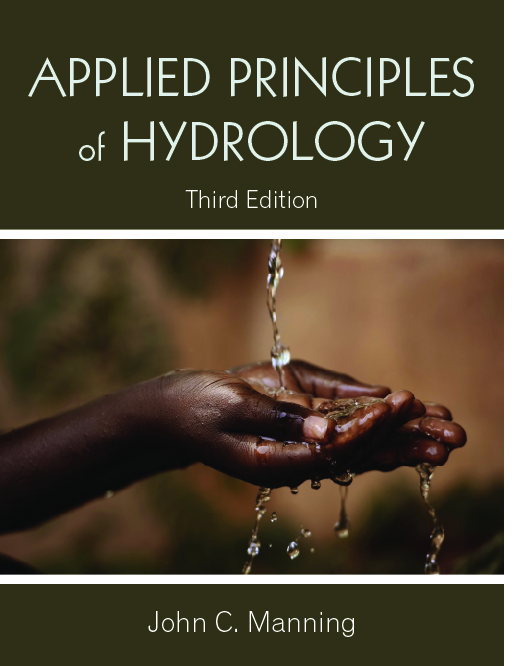1. The Water Cycle
Earth—The Blue Planet / The Water Cycle
2. The Structure and Properties of Water
Molecular Structure of Water / Properties of Water
3. Water in the Air: Evaporation and Condensation
Evaporation / Condensation / Applications
4. Precipitation
The Process of Precipitation / Snow / Interception / Applications
5. Infiltration and Soil Water
Infiltration / Soil Water / Applications
6. Evapotranspiration
The Process of Transpiration / Osmosis—a Process of Selective Diffusion / Measuring Evapotranspiration / Estimation of Evapotranspiration for a Growing Crop / Potential Evapotranspiration / Effect of Evapotranspiration on Water Supply / Phreatophytes—Water Thieves of the Desert / Applications
7. Groundwater
The Groundwater Reservoir / Aquifers / Aquifers as Reservoirs: Groundwater in Storage / Interpretation of Water Levels and Storage Reduction / Aquifers as Conduits—Groundwater in Motion / Applications
8. Runoff
The Runoff Cycle / Factors Affecting Runoff / Measurement of Runoff / The Stream Channel and Its Floodplain / Floods / Applications
9. Chemical Quality of Natural Water
What Is Salinity? / Dissolved Solids / Global Circulation of Dissolved Solids / How Quality Affects Use / Applications
10. The Water Cycle and Man
The Beginning of Western Civilization / The Middle Ages / Modern Times—The Age of Science / Water Problems—Ancient and Modern / Conclusion
Appendix I: Map of California Showing Locations of Examples Discussed in Text
Appendix II: Moving Averages
Appendix III: Sources of Hydrologic Data
Appendix IV: References

276 pages, $58.95 list
1-4786-3419-7
978-1-4786-3419-5
© 1997
paperback
eBook availability
Applied Principles of Hydrology
Third Edition
Less than 1% of the Earth’s water is available for human use, the average family uses 400 gallons of water daily, and expected population growth means an increase in water use. The study of hydrology—how water behaves as it moves through the water cycle—is vital to reducing strains on our water supply and infrastructure. Written for those who want to understand hydrologic principles without a background in mathematics, Manning’s basic water science text begins with the physical and chemical attributes that make water a unique substance and proceeds with a step-by-step discussion of the water cycle. Scientific principles are illustrated by real-world examples, while “investigations” sections offer practical suggestions for making measurements and/or interpretations of hydrological variables in the local environment and for applying principles discussed in the text. This well-structured, reader-friendly text benefits not only students in elementary hydrology courses, but also those studying broader areas of natural resources, ecology, geography, and urban planning.